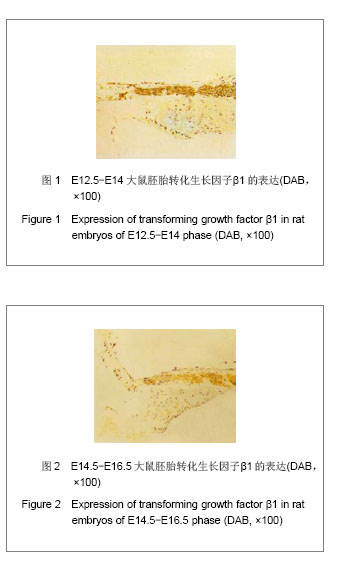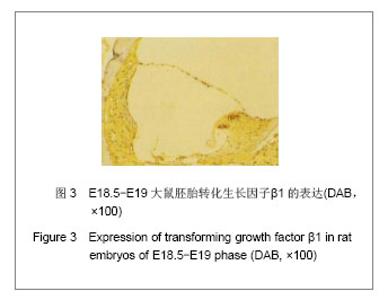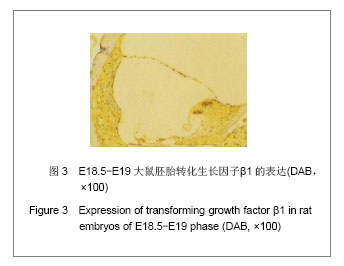| [1]赵玉林,董明敏,李晓萍,等.小鼠耳蜗发育的形态学研究[J].解剖学杂志,2000,23(1):69-72.
[2]Romand R, Dollé P, Hashino E. Retinoid signaling in inner ear development. J Neurobiol. 2006;66(7):687-704.
[3]Liu J, Johnson K, Li J,et al. Regenerative phenotype in mice with a point mutation in transforming growth factor beta type I receptor (TGFBR1). Proc Natl Acad Sci U S A. 2011;108(35): 14560-14565.
[4]Matsunobu T, Torigoe K, Ishikawa M,et al. Critical roles of the TGF-beta type I receptor ALK5 in perichondrial formation and function, cartilage integrity, and osteoblast differentiation during growth plate development. Dev Biol. 2009;332(2): 325-338.
[5]Yang SM, Hou ZH, Yang G,et al. Chondrocyte-specific Smad4 gene conditional knockout results in hearing loss and inner ear malformation in mice. Dev Dyn. 2009;238(8):1897-1908.
[6]Li XS, Sun JJ, Jiang W,et al. Effect on cochlea function of guinea pig after controlled release recombinant human bone morphogenetic protein 2. Chin Med J (Engl). 2010;123(1): 84-88.
[7]Liu X, Chen Q, Kuang C,et al. A 4.3 kb Smad7 promoter is able to specify gene expression during mouse development. Biochim Biophys Acta. 2007;1769(2):149-152.
[8]Mukherjee A, Dong SS, Clemens T,et al. Co-ordination of TGF-beta and FGF signaling pathways in bone organ cultures. Mech Dev. 2005;122(4):557-571.
[9]Teng Y, Kanasaki K, Bardeesy N,et al. Deletion of Smad4 in fibroblasts leads to defective chondrocyte maturation and cartilage production in a TGFβ type II receptor independent manner. Biochem Biophys Res Commun. 2011;407(4): 633-639.
[10]Martinez-Alvernia EA, Mankarious LA. Matrix metalloproteinases 2 and 9 are concentrated in the luminal aspect of the cricoid cartilage, diminish with loss of perichondrium, and are reinstated by transforming growth factor beta 3. Ann Otol Rhinol Laryngol. 2008;117(12): 925-930.
[11]Kryger ZB, Sisco M, Roy NK,et al. Temporal expression of the transforming growth factor-Beta pathway in the rabbit ear model of wound healing and scarring. J Am Coll Surg. 2007; 205(1):78-88.
[12]Anderson CF, Lira R, Kamhawi S,et al. IL-10 and TGF-beta control the establishment of persistent and transmissible infections produced by Leishmania tropica in C57BL/6 mice. J Immunol. 2008;180(6):4090-4097.
[13]Satoh H, Billings P, Firestein GS,et al. Transforming growth factor beta expression during an inner ear immune response. Ann Otol Rhinol Laryngol. 2006;115(1):81-88.
[14]Kel JM, Girard-Madoux MJ, Reizis B,et al. TGF-beta is required to maintain the pool of immature Langerhans cells in the epidermis. J Immunol. 2010;185(6):3248-3255.
[15]Lee YW, Chung Y, Juhn SK,et al. Activation of the transforming growth factor beta pathway in bacterial otitis media. Ann Otol Rhinol Laryngol. 2011;120(3):204-213.
[16]Tateossian H, Hardisty-Hughes RE, Morse S,et al. Regulation of TGF-beta signalling by Fbxo11, the gene mutated in the Jeff otitis media mouse mutant. Pathogenetics. 2009;2(1):5.
[17]Zhao SQ, Li J, Liu H,et al. Role of interleukin-10 and transforming growth factor beta 1 in otitis media with effusion. Chin Med J (Engl). 2009;122(18):2149-2154.
[18]McCullar JS, Oesterle EC. Cellular targets of estrogen signaling in regeneration of inner ear sensory epithelia. Hear Res. 2009;252(1-2):61-70.
[19]Simeone DM, Zhang L, Graziano K,et al. Smad4 mediates activation of mitogen-activated protein kinases by TGF-beta in pancreatic acinar cells. Am J Physiol Cell Physiol. 2001; 281(1):C311-319.
[20]Wissel K, Wefstaedt P, Miller JM,et al. Differential brain-derived neurotrophic factor and transforming growth factor-beta expression in the rat cochlea following deafness. Neuroreport. 2006;17(12):1297-1301.
[21]Frenz DA, Liu W. Treatment with all-trans-retinoic acid decreases levels of endogenous TGF-beta(1) in the mesenchyme of the developing mouse inner ear. Teratology. 2000;61(4):297-304.
[22]Butts SC, Liu W, Li G,et al. Transforming growth factor-beta1 signaling participates in the physiological and pathological regulation of mouse inner ear development by all-trans retinoic acid. Birth Defects Res A Clin Mol Teratol. 2005; 73(4):218-228.
[23]Paradies NE, Sanford LP, Doetschman T, et al. Developmental expression of the TGF beta s in the mouse cochlea. Mech Dev. 1998;79(1-2):165-168.
[24]赵玉林,李晓萍,董明敏.转化生长因子在小鼠内耳发育中作用的研究[J].中国民政医学杂志, 2002,14(2):72-73.
[25]Kawamoto K, Yagi M, Stöver T,et al. Hearing and hair cells are protected by adenoviral gene therapy with TGF-beta1 and GDNF. Mol Ther. 2003;7(4):484-492.
[26]Malgrange B, Rigo JM, Coucke P,et al. Identification of factors that maintain mammalian outer hair cells in adult organ of Corti explants. Hear Res. 2002;170(1-2):48-58.
[27]Kim HJ, Kang KY, Baek JG, et al. Expression of TGFbeta family in the developing internal ear of rat embryos. J Korean Med Sci. 2006;21(1):136-142. |



